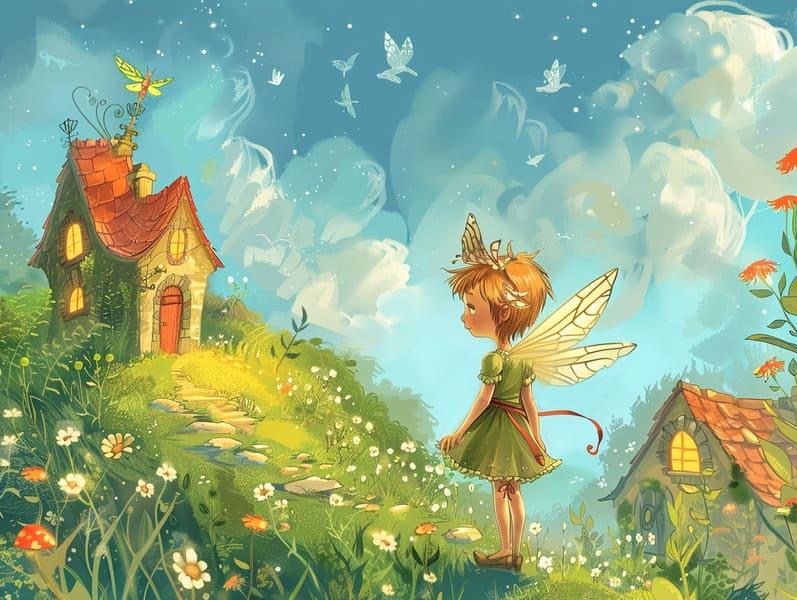Understanding the Legacy of Legendary Fairy Tales and the Unceasing Charm.
Understanding the Legacy of Legendary Fairy Tales and the Unceasing Charm.
Blog Article

Historical fairy tales have deep roots. These stories have been narrated from one generation to the next far before they were ever transcribed. They came from a variety of traditions, including Eastern traditions. They were initially transmitted among older generations, often carrying themes and messages relevant to the societal norms and beliefs of the time.
Jacob and Wilhelm Grimm, Jacob and Wilhelm, were among the first to compile many of these beloved fairy tales. Their anthology, "Grimm's Folk Tales," included stories like "The True Bride," "Little Brother and Little Sister," and "Little Snow White," which have since become staples in the world of children's fairy tales. Similarly, H. C. Andersen's enchanting fairy tales, such as "The Little Mermaid," and "The Duckling's Story," have touched hearts worldwide, establishing their place in the pantheon of classic fairy tales.
Despite their ancient origins, these stories remain as important as ever, especially as nighttime stories for kids. These whimsical stories are now available in numerous formats, including beautifully illustrated books, captivating animations, and free fairy tales online.
Their persistent charm can be linked to several fascinating points:
Key Lessons: Old fairy tales often whisper important moral lessons. Tales like "The Tale of the Boy Who Cried Wolf" teach the virtue of honesty, while "The Tortoise and the Hare" illustrate the virtues of resolve and meekness. These tales offer little ones clear distinctions between right and wrong, forming their moral compass in a tender yet deep way.
Compassion and Insight: Traditional fairy tales frequently present characters facing trials and tribulations, prompting kids to understand with their struggles and back their triumphs. For instance, "Beauty and Her Beast" illustrates the merit of appreciating inner worth to see the inner core of a being, cultivating awareness and comprehension.
Cultural Recognition: Many classic fairy tales are interwoven with the cultural contexts from which they were born. Exploring these stories can provide fascinating glimpses into different societies, encouraging a sense of world awareness and comprehension.
Inventiveness and Imagination: The enchanted elements in ancient fairy tales—fairy godmothers—spark children’s inventiveness. These stories move readers to magical realms, promoting fantasy ideas and a sense of fascination that remains a lifetime.
Ancient fairy tales are not only entrancing but also educational. They work as charming tools in nurturing various cognitive and affective skills in children. When ancient fairy tales are narrated, they promote communication skills by showing new lexicon and complicated sentence structures. This practice also promotes hearing perception and attention span, as children stay focused, looking forward to see what happens next.
Furthermore, reflecting on the themes and characters of classic fairy tales can sharpen thought processes and critical thinking. Young ones are educated to pinpoint patterns, anticipate outcomes, and figure out cause and effect. These conversations also help little ones convey their thoughts and feelings, cultivating their emotional intelligence.
In today’s technological age, the availability of web-based fairy tales has made these narratives more within reach than ever. Digital sites and digital apps share wide arrays of bedtime fairy tales that can be seen or listened to anytime, anywhere. Fairy tales told out loud are particularly favored, extending an interactive method for young readers to appreciate these fantastical tales. Sound books and spoken videos carry characters and settings to life, often paired with charming music and instrumentals that improve the tale experience.
The enduring charm of ancient fairy tales lies in their ability to shift to modern online fairy tales for free days while sustaining their main lessons. Contemporary reinterpretations of these tales often include more varied protagonists and modern settings, making them meaningful to today’s audience. However, the core values of bravery, sympathy, and impartiality remain unchanged, continuing to impact young readers of all ages.
Traditional fairy tales also offer a sense of assurance and knownness. They offer a neat narrative with a definite beginning, middle, and end, often drawing to a close with the conclusion of conflicts and the triumph of morality over immorality. This certainty can be relieving for young readers, introducing a sense of security in an unstable world.
Old fairy tales continue to captivate and inform new generations, maintaining their splendor and importance in modern society. As children's bedtime stories, they present a perfect blend of allure and teaching, aiding moral values, empathy, and creativity. The abundance of online fairy tales and the widespread nature of fairy tales read out loud assure that these traditional fairy tales remain within reach to new generations.
By maintaining and circulating these narratives, we continue to pay tribute to the rich tapestry of creativity and cultural heritage. Whether you are discovering a artistically illustrated book, accessing a web-based library, or listening through an voice book, the grace of famous fairy tales is always within reach. These tales point out of the timeless effect of fairy tales and its ability to draw us together across centuries and lands.
Be it you are browsing a gorgeously illustrated book, exploring a virtual collection, or listening via an read-aloud story, the delight of popular fairy tales is always within reach.
These fairy tales point out of the everlasting magic of tales and its ability to bring us together across epochs and places, creating a bond that captivates and teaches alike.